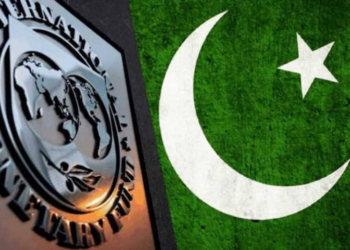Islamabad, February 7, 2025: Fitch Ratings has expressed optimism about Pakistan’s economic recovery, highlighting the country’s structural reforms as a crucial factor in shaping its credit outlook in the coming years. The success of these reforms will be key to restoring economic stability, boosting external financial reserves, and maintaining access to multilateral and bilateral financing, especially from the International Monetary Fund (IMF).
Pakistan’s recent economic progress has been supported by a series of policy measures, including the State Bank of Pakistan’s decision to reduce its policy rates to 12% on January 27, 2025. This move follows significant improvements in inflation management, with consumer price inflation dropping to just over 2% year-on-year in January 2025, down from nearly 24% in FY24.
Fitch pointed out that this trend of disinflation, combined with exchange rate stability and a tight monetary policy, has helped reduce domestic demand and external financing requirements, offering relief to the country’s financial situation.
The outlook for Pakistan’s economy in FY25 remains positive, with Fitch forecasting a 3.0% real GDP growth. The country’s ability to absorb tighter policy settings has allowed it to benefit from lower interest rates, with private sector credit growth turning positive in real terms for the first time since June 2022.
Furthermore, Pakistan’s current account has shown improvement, posting a surplus of approximately USD 1.2 billion for the six months leading up to December 2024, compared to a deficit in the same period of the previous fiscal year. Strong remittances, robust agricultural exports, and foreign exchange reforms have all contributed to this positive trend.
However, while Pakistan’s reserves reached $18.3 billion by the end of 2024—equivalent to roughly three months of current external payments—the country still faces significant external financing needs. With over $22 billion in public external debt maturing in FY25, including $13 billion in bilateral deposits, external liquidity remains a critical concern. Fitch expects Pakistan’s bilateral partners, such as Saudi Arabia and the UAE, to honor their commitments to rollover these funds.
Challenges ahead: financing and reforms
The country’s credit outlook will largely depend on its ability to secure sufficient external financing and continue its structural reforms. The government has planned for USD 6 billion in multilateral funding for FY25, though much of this will go towards refinancing existing debt. Positive steps have been taken, such as the recent announcement of a $20 billion 10-year framework with the World Bank Group, though careful management will be required.
Fitch also noted that while fiscal reforms are progressing, Pakistan faces challenges in meeting IMF targets, particularly regarding tax revenue growth and the timely implementation of agricultural income tax legislation. Delays in these structural reforms could complicate efforts to maintain a stable economic trajectory.
Looking ahead, Fitch believes that positive credit rating actions could occur if Pakistan achieves a sustained recovery in foreign reserves, further mitigates external financing risks, or successfully implements fiscal consolidation measures in line with IMF commitments. Conversely, delays in IMF reviews or worsening external liquidity could lead to negative credit actions.
While Pakistan has made significant progress in addressing its economic challenges, its future credit profile will depend on continued structural reforms, stabilization of external financing, and the management of substantial public debt maturities in the upcoming fiscal year. The country’s ongoing reform agenda will be crucial to maintaining a stable economic outlook and credit profile.








